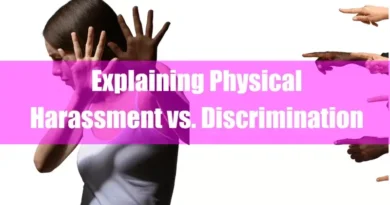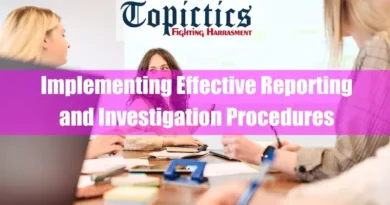Key takeaways on “Documenting Evidence in Harassment Cases”:
- Types of Evidence: Understand the various forms of evidence crucial for building a strong harassment case, including electronic communication, physical evidence, witness testimony, medical records, and documentation of reported incidents.
- Best Practices for Documentation: Adhere to best practices such as accuracy, timeliness, preservation, categorization, and confidentiality when documenting evidence. These practices ensure the credibility and effectiveness of the evidence collected.
- Strategies for Different Types of Harassment: Tailor your documentation approach based on the type of harassment experienced. Whether it’s workplace harassment, online harassment, or stalking, know your rights, utilise available resources, and prioritize safety.
- Legal Considerations and Resources: Understand the legal landscape associated with harassment cases, including evidence admissibility, and seek legal counsel to navigate the complexities of the legal system effectively. Utilize available resources such as hotlines, legal aid organizations, and advocacy groups for support and guidance.
- Empowerment Through Documentation: Recognize that documenting evidence empowers individuals to pursue accountability and justice, fostering safer environments for themselves and others affected by harassment. Seeking support throughout the process is encouraged to navigate challenges and uncertainties.
These key takeaways encapsulate the importance of thorough and credible documentation, tailored strategies for different harassment contexts, and the value of seeking support and legal guidance in harassment cases.
I. Introduction
Harassment, unfortunately, can manifest in various forms and contexts. From verbal abuse and unwanted touching in workplaces and schools to cyberbullying and stalking online, even within the supposed safe haven of home, individuals can be targeted and harmed. Recognizing these different types and locations of harassment is crucial for identifying situations and understanding the importance of documenting evidence in harassment cases.
This documentation is key in holding perpetrators accountable and protecting victims’ rights. Detailed records become concrete evidence, supporting investigations and strengthening legal cases. They provide factual details, timelines, and potential supporting materials to authorities, helping establish harmful behavior patterns and demonstrating the harm caused. Timely documentation also preserves memories, ensuring accurate recollection of events and empowering victims to seek justice with validated experiences. Remember, documenting empowers you to fight for a safer and more respectful environment for yourself and others.
While documenting can feel daunting, it is crucial to safeguard yourself and secure help. Remember, every detail documented becomes a building block for securing a safe and respectful environment for yourself and others.
II. Identifying Relevant Evidence

When navigating the aftermath of harassment, gathering and meticulously documenting relevant evidence becomes your armor of defense. While specific details may vary based on the individual circumstances, understanding the diverse forms of evidence strengthens your case and empowers you to seek justice.
A. Types of Evidence
1. Electronic Communication:
- Emails: Save and print emails containing harassing messages, threats, or unwelcome demands. Include complete headers and timestamps for authenticity.
- Text Messages: Screenshot text messages, noting timestamps and sender information. Download and save the complete message history.
- Social Media Posts: Capture screenshots of offending comments, posts, or direct messages on social media platforms. Preserve account details and timestamps.
- Online Interactions: Document online interactions in gaming platforms, forums, or chat rooms where harassment occurred. Include screenshots and username/profile information.
Related articles:
- Clarifying Consent in Professional Environments
- Understanding Unwanted Advances
- Explaining Sexual Favors Considering Harassment
- Understanding Power Dynamics
2. Physical Evidence:
- Photos: Take pictures of injuries, damage to property, or offensive physical displays caused by the harassment. Ensure clear timestamps and accurate dates.
- Recordings: Audio or video recordings of the harassment act as invaluable evidence. Obtain consent from participants if recording in person.
- Objects: Preserve physical objects linked to the harassment, like threatening letters, gifts, or damaged items. Document their origin and connection to the incident.
3. Witness Testimony:
Identify individuals who witnessed the harassment firsthand. Request written statements detailing their observations, including dates, times, and specific details witnessed. If witnesses hesitate to provide written statements, document their accounts in your own words, ensuring accuracy and objectivity.
4. Medical Records:
In cases where harassment caused emotional or physical harm, seek medical attention and preserve medical records documenting the harm and its connection to the harassment.
5. Documentation of Reported Incidents:
Keep copies of any official reports filed with authorities, employers, or school administrators regarding the harassment, including dates, details documented, and responses received. If you reported the harassment internally, save copies of emails, written complaints, or any other reporting record.
Remember:
- Timeliness is key: Document details promptly while memories are fresh and emotions haven’t clouded your recollection.
- Accuracy matters: Stick to factual observations, avoiding interpretations or opinions.
- Organization is crucial: Create a dedicated system for storing and categorizing evidence chronologically and by type.
- Confidentiality is vital: Share sensitive information only with authorized individuals or legal professionals.
By diligently gathering and documenting diverse forms of evidence, you empower yourself to navigate the process toward accountability and justice.
Related articles:
- Ultimate Bystander Intervention Training (BIT)
- Cultural Norms and Harassment: Understanding the Link
- Understanding Harassment Reporting Mechanisms
- The Role of Empathy in Harassment
III. Best Practices for Documentation

Building a strong case of harassment hinges on meticulous documentation. This section equips you with the best practices to ensure your evidence is accurate, preserved, and readily accessible when needed.
A. Accuracy and Objectivity
- Stick to facts: Focus on concrete details like dates, times, locations, actions, and verbatim quotes. Avoid embellishments, opinions, or interpretations.
- Be specific: Provide as many details as possible, describing the nature of the harassment, specific behaviors, and the impact it had on you.
- Remain objective: Don’t personalize or emotionalize your accounts. Stick to factual descriptions and observations.
B. Timeliness is Key
- Document promptly: Don’t rely on memory. Write down details after each incident while your recollection is fresh and emotions haven’t faded.
- Date and timestamp: Record the date and time of each incident or communication, adding an extra layer of credibility.
- Maintain a dedicated log: Consider using a journal, notebook, or dedicated app to chronologically log incidents, including details, witnesses, and actions taken.
C. Preservation is Paramount
- Create secure copies: Scan physical documents, save digital copies separately from originals, and back them up regularly in secure locations.
- Avoid alterations: Never edit or manipulate evidence in any way. Alterations raise doubts about its authenticity and could damage your case.
- Maintain chain of custody: If physical evidence is transferred to authorities or legal professionals, document the transfer process for tracking purposes.
D. Categorization for Easy Reference
- Organize systematically: Group evidence by incident, type (e.g., emails, witness statements), and date for easier retrieval and presentation.
- Create an index or system: Implement a clear system for referencing each piece of evidence within your log or documentation.
- Consider digital tools: Explore secure evidence management apps or software to assist with organization and accessibility.
E. Confidentiality Matters
- Protect sensitive information: Limit access to sensitive details and evidence to authorized individuals like legal professionals or trusted support networks.
- Be mindful of online sharing: Avoid sharing potentially damaging or identifying information online unless necessary and done securely.
- Seek guidance: Consult with legal professionals or support organizations to understand the best practices for protecting your privacy and ensuring evidence confidentiality.
Remember, thorough and credible documentation is vital in navigating harassment cases. By adhering to these best practices, you empower yourself with solid evidence, fostering accountability and protecting your rights.
Related articles:
- How to Provide Anti-harassment Training in the Workplace
- How to Provide Anti-harassment Training in Schools
- How to Create an Anti-Harassment Policy: 9 Effective Steps
- How to Create an Effective Anti-Harassment Policy Under Title IX.
IV. Specific Strategies for Different Types of Harassment

While the core principles of accurate, timely, and confidential documentation remain constant, specific harassment contexts may require tailored strategies. Let’s explore:
A. Workplace Harassment
- Know your rights: Familiarize yourself with company policies and reporting procedures regarding harassment.
- Utilize internal resources: Report incidents to immediate supervisors, HR representatives, or designated complaint channels. Document these reports, noting dates, individuals contacted, and responses received.
- Capture communication: Save emails, notes, or recordings of verbal interactions related to the harassment, maintaining confidentiality within company policies.
- Seek witnesses: Identify colleagues who witnessed the behavior and request written statements, respecting their comfort level.
B. Online Harassment
- Screenshot meticulously: Capture screenshots of harassing content, including timestamps, usernames, and profile information. Utilize built-in screenshot tools or screen recording software for comprehensive documentation.
- Report to platforms: Report the abuse to the relevant online platform and preserve a record of your reports.
- Preserve blocked messages or profiles: Don’t delete blocked messages or profiles immediately. Consider using platform-specific archiving tools or saving screenshots before blocking.
- Consider legal options: Depending on the severity and nature of the online harassment, consult with legal professionals to explore potential legal avenues.
C. Stalking
- Prioritize safety: If immediate danger is present, contact emergency services immediately.
- File police reports: File police reports for every unwanted contact attempt, threat, or suspicious activity. Request copies of these reports for evidence.
- Document meticulously: Note the date, time, location, and details of each unwanted contact, including phone calls, messages, sightings, and online interactions.
- Evidence of fear and safety concerns: Save voicemails, screenshots, or recordings demonstrating threats or your fear for safety. Collect statements from individuals who witnessed stalking behavior.
- Seek legal advice: Consult with legal professionals specializing in stalking cases to explore protective orders, restraining orders, and other legal options.
Remember: Every harassment case is unique. Consider these strategies as starting points and tailor your documentation approach to your specific situation. Seek guidance from trusted support networks, legal professionals, or relevant organizations whenever needed.
Related articles:
- Leveraging Technology for Harassment Prevention and Reporting
- Creating a Culture of Transparency and Accountability
- Explaining Collaborating with External Resources
- Ongoing Initiatives: Building a Harassment-Free Workplace
V. Legal Considerations and Resources

Navigating the legal landscape associated with harassment cases can feel overwhelming. This section provides a glimpse into legal considerations, underlines the value of seeking professional guidance, and introduces available resources to empower you during this process.
A. Admissibility of Evidence
Understanding the legal validity of your documented evidence is crucial. This hinges on factors like:
- Relevance: Evidence directly connected to the specific harassment allegations holds greater weight.
- Authentication: Ensuring evidence is genuine and unaltered strengthens its admissibility.
- Originality: Maintaining original copies alongside secure backups bolsters authenticity.
- Chain of custody: Proper documentation of evidence handling, especially for physical items, builds credibility.
- Privacy considerations: Balancing your right to document with the potential privacy concerns of others involved is essential.
Consult with legal professionals to gain clarity on the specific laws and legal requirements regarding evidence admissibility in your jurisdiction and case context.
B. Seeking Legal Counsel
While documenting empowers you, navigating the legal system often requires professional guidance. An experienced lawyer can:
- Analyze your case: Assess the strength of your evidence, identify legal options, and provide strategic advice.
- Advise on evidence gathering: Guide you on collecting and preserving admissible evidence relevant to your case.
- Represent you in legal proceedings: Advocate for your rights in court, hearings, or mediations, presenting evidence effectively.
- Protect your interests: Ensure your legal rights are upheld and navigate complex legal procedures smoothly.
Seeking legal counsel empowers you to pursue justice with confidence and knowledge, navigating the intricacies of the legal system effectively.
C. Available Resources
Numerous resources and support networks can guide you through your journey:
- National hotlines: Specialized hotlines like the National Center for Victims of Crime (1-800-VICTIM-6) offer confidential support and information.
- Legal aid organizations: Non-profit organizations like the Legal Services Corporation provide eligible individuals free or low-cost legal assistance.
- Advocacy groups: Groups like the Rape, Abuse & Incest National Network (RAINN) or the National Coalition Against Domestic Violence (NCADV) offer support, resources, and legal referrals.
- Employee assistance programs (EAPs): If the harassment occurred in the workplace, explore confidential support and legal guidance through your EAP.
Remember, you are not alone. Reaching out to supportive resources can provide invaluable guidance, emotional support, and legal assistance throughout your journey toward accountability and justice.
Related articles:
- Effective Investigations Explained: The Art of Inquiry
- Ethical Decision-making Training: An Ultimate Guide
- Manager’s Anti-harassment Training
- 15 Devastating Harassment Effects on the Organizations
- How to Create an Anti-Retaliation Policy
- Fear of Reprisal in the Workplace
VI. Conclusion: Taking the First Step Towards Justice
Harassment has devastating consequences, impacting individuals on multiple levels. Documenting evidence empowers you to pursue accountability and justice, fostering a safer and more respectful environment for yourself and others. Remember, you are not alone in this journey. You can navigate the process confidently and resiliently by adhering to the best practices outlined in this article, seeking professional guidance, and utilizing available resources. Regardless of the specific outcome, documenting your experiences serves as an act of empowerment and courage, paving the way for a future free from harassment.
VII. FAQs about Documenting Evidence in Harassment Cases
A. What if I’m worried about retaliation for documenting harassment?
Fearing retaliation is a common concern. Your safety and well-being are paramount. Here are some steps to consider:
- Confidentiality: Limit the sharing of evidence to trusted individuals and legal professionals. Consider using secure documentation tools and password protection.
- Anonymous reporting: Depending on your workplace policies or online platforms, explore anonymous reporting options to document the harassment without revealing your identity.
- Support networks: Seek emotional support from trusted friends, family, or support groups specializing in harassment situations. They can offer guidance and a safe space to discuss your concerns.
- Legal advice: Consult with a legal professional to understand your rights and explore potential legal options to protect yourself from retaliation.
B. What happens if I lose some evidence accidentally?
Losing evidence happens. Remember, the key is to be diligent and thorough whenever possible. Here’s how to navigate accidental loss:
- Recovering lost data: Consider data recovery software if digital evidence is lost. However, success is only sometimes guaranteed.
- Focus on remaining evidence: Document the lost evidence, noting its content and what you remember about it. This helps explain the gap in documentation.
- Focus on moving forward: Refrain from dwelling on lost evidence. Continue diligently capturing and preserving any available proof.
- Legal advice: Discuss the accidental loss with your lawyer to understand its potential impact on your case and any alternative measures you can take.
C. How long should I keep my documented evidence?
There’s no one-size-fits-all answer, but it’s best to err on caution. Here are some factors to consider:
- Statute of limitations: Legal timeframes for filing harassment complaints vary by jurisdiction and type of harassment. Keep your evidence for at least this period, even if you don’t initially pursue legal action.
- Potential future use: You may find the evidence useful in future complaints, mediation, or legal proceedings related to the same incident.
- Storage considerations: Choose secure storage methods that protect your privacy and prevent data loss. Regularly back up digital evidence.
D. What if I’m uncomfortable documenting everything myself?
It’s completely understandable to feel overwhelmed. Here are some options:
- Seek support: Reach out to trusted friends, family, or support groups to share your experiences and seek help with documentation.
- Utilize resources: Legal aid organizations or advocacy groups may assist with gathering evidence and documentation.
- Consider therapy: Therapy can provide a safe space to process your experiences and gain emotional support during this challenging time.
E. Can I record phone calls or conversations as evidence?
Recording laws vary significantly by location. Before recording, research the legality of recording conversations in your area and obtain consent from participants if necessary. Even if legal, consider the potential ethical implications and potential impact on your case.
Also, read:
- 20 Quid Pro Quo Harassment Examples and How to Stop Them
- How to Prove Quid Pro Quo Harassment: 13 Powerful Evidences
- Explaining Quid Pro Quo Harassment Under Title IX
- Quid Pro Quo Harassment: What It Is? Know Everything
- How to Report Quid Pro Quo Harassment.
F. What if the harassment continues after I document it?
Continue documenting each new incident, including details like date, time, and content. If the harassment escalates or feels dangerous, prioritize your safety. Report the incidents to appropriate authorities and seek legal advice immediately.
G. Should I report the harassment before or after documenting evidence?
Reporting and documenting can happen simultaneously or in any order that feels safest and most comfortable. Reporting can trigger official investigations that might collect some evidence. Still, personal documentation ensures you have control and a complete record tailored to your needs. Remember, your safety and emotional well-being are the top priorities. Seek support from trusted individuals or resources during this process.
H. What if I don’t have concrete proof like emails or recordings?
While these forms are valuable, don’t feel discouraged if they’re absent. Detailed written accounts of events, dates, times, and specific details of the harassment constitute evidence, especially if supported by witness testimonies. Capture as much information as you can remember accurately and objectively. Even seemingly small details can contribute to building a stronger case.
I. Can I share my documented evidence publicly online?
While sharing your experiences can be empowering and raise awareness, be cautious about publicly sharing specific evidence, especially information that could identify yourself or others involved. This may have legal or personal repercussions. Consider sharing anonymized summaries or seeking guidance from legal professionals or support groups before publicly disclosing sensitive details.
J. How long does it typically take to see results after documenting harassment?
Unfortunately, there’s no set timeframe. Investigations and legal proceedings can take varying lengths depending on the complexity of the case and the specific system involved. Stay patient, continue advocating for yourself, and seek support from trusted individuals or resources during this process. Remember, documenting empowers you to hold perpetrators accountable, even if the timeline feels prolonged.
Remember, documenting harassment evidence is an empowering step towards creating a safer environment for yourself and others. Don’t hesitate to seek legal counsel and utilize available resources for guidance and support throughout your journey.









